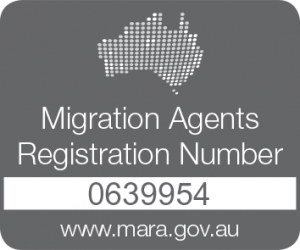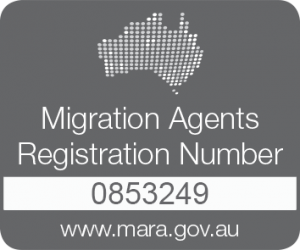Raising the Temporary Skilled Migration Income Threshold
Raising the Temporary Skilled Migration Income Threshold
In this blog we will cover:
- Raising the TSMIT to $70,000 from 1 July 2023
- Purpose of the TSMIT Increase
- Labour agreements
- Annual Market Salary Rate (AMSR)
- Salary assessments for those in Australia on a pathway to permanent residence
- Labour Market Testing
- Skilling Australians Fund (SAF)
As of 1 July 2023, the Temporary Skilled Migration Income Threshold has been increased for the first time since 2013. The Temporary Skilled Migration Income Threshold has been raised to $70,000 from $53,900. As of 1st July 2023, all new nomination applications for skilled visas must meet this threshold or the annual market salary rate, whichever is higher.
This will impact numerous skilled visas, including:
- Temporary Skill Shortage (subclass 482)
- Skilled Employer Sponsored Regional (Provisional) (subclass 494)
- Employer Nomination Scheme (subclass 186)
- Regional Sponsored Migration Scheme (subclass 187)
How will this impact skilled workers?
As of 1 July 2023, the Temporary Skilled Migration Income Threshold has been increased for the first time since 2013. The Temporary Skilled Migration Income Threshold has been raised to $70,000 from $53,900. As of 1st July 2023, all new nomination applications for skilled visas must meet this threshold or the annual market salary rate, whichever is higher.
This will impact numerous skilled visas, including:
- Temporary Skill Shortage (subclass 482)
- Skilled Employer Sponsored Regional (Provisional) (subclass 494)
- Employer Nomination Scheme (subclass 186)
- Regional Sponsored Migration Scheme (subclass 187)

What is the purpose of the TSMIT Increase?
The increase in TSMIT is aimed at targeting highly skilled workers and providing them with better protection against exploitation. The Australian government is committed to ensuring that migrants entering the country under these programs earn sufficient income to support themselves and their families. Notably, this marks the first increase in the TSMIT since 2013, and the new threshold of $70,000 aligns more closely with average weekly ordinary time earnings growth over the last decade.
Labour Agreements
The new TSMIT of $70,000 will apply to labour agreement nominations lodged on or after 1 July 2023. Existing TSMIT concessions will still be applicable, but they will be calculated based on the new threshold. It’s essential to note that this change will not impact Aged Care Industry Labour Agreements, which have a specified salary in dollars. From 1 July 2023 there is a minimum salary of $63,000 under the new TSMIT of $70,000.
Annual Market Salary Rate (AMSR)
For nominations, it is mandatory to indicate a salary that is at least equal to the TSMIT. For the Employer Sponsored Program, the salary must also be equivalent to the Annual Market Salary Rate. This is to ensure employers aren’t underpaying or disadvantaging Australians by sponsoring migrant workers.
While this requirement may exclude lower skilled occupations from the program, the Department is able to appropriately consider the following elements of the AMRS, as long as employers provide sufficient and suitable evidence justifying their claims, including:
- What is considered equivalent work
- Where there is no equivalent worker or award/agreement, employers must provide evidence of how they determined the AMSR
- What counts as guaranteed monetary earnings for an actual or theoretical equivalent Australian worker
- Allowing the AMSR to include non-monetary benefits
This does not mean migrant workers with the same experience can be paid more than Australian workers in the same position.
Salary assessments for those in Australia on a pathway to permanent residence
For nominations, it is mandatory to indicate a salary that is at least equal to the TSMIT. For the Employer Sponsored Program, the salary must also be equivalent to the Annual Market Salary Rate. This is to ensure employers aren’t underpaying or disadvantaging Australians by sponsoring migrant workers.
While this requirement may exclude lower skilled occupations from the program, the Department is able to appropriately consider the following elements of the AMRS, as long as employers provide sufficient and suitable evidence justifying their claims, including:
- What is considered equivalent work
- Where there is no equivalent worker or award/agreement, employers must provide evidence of how they determined the AMSR
- What counts as guaranteed monetary earnings for an actual or theoretical equivalent Australian worker
- Allowing the AMSR to include non-monetary benefits
This does not mean migrant workers with the same experience can be paid more than Australian workers in the same position.
Labour Market Testing (LMT)
No changes have been made to labour market testing requirements or concessions to LMT under a labour agreement. This includes the requirement that the advertised salary in the LMT must reflect the nominated salary.
- If a nominated salary is more than the LMT advertised salary, then LMT cannot be considered met.
This is because, based on evidence submitted; it would appear that there was no genuine attempt to fill the nominated position by advertising a higher salary, which may have attracted a different group of applicants including Australian citizens or permanent residents.
Skilling Australians Fund (SAF)
Employers must ensure that they meet the new salary requirements and conduct proper labour market testing before lodging their nominations. It is essential to note that if a nomination is withdrawn or refused due to a salary less than the TSMIT, there is no provision for a refund of the SAF levy.





